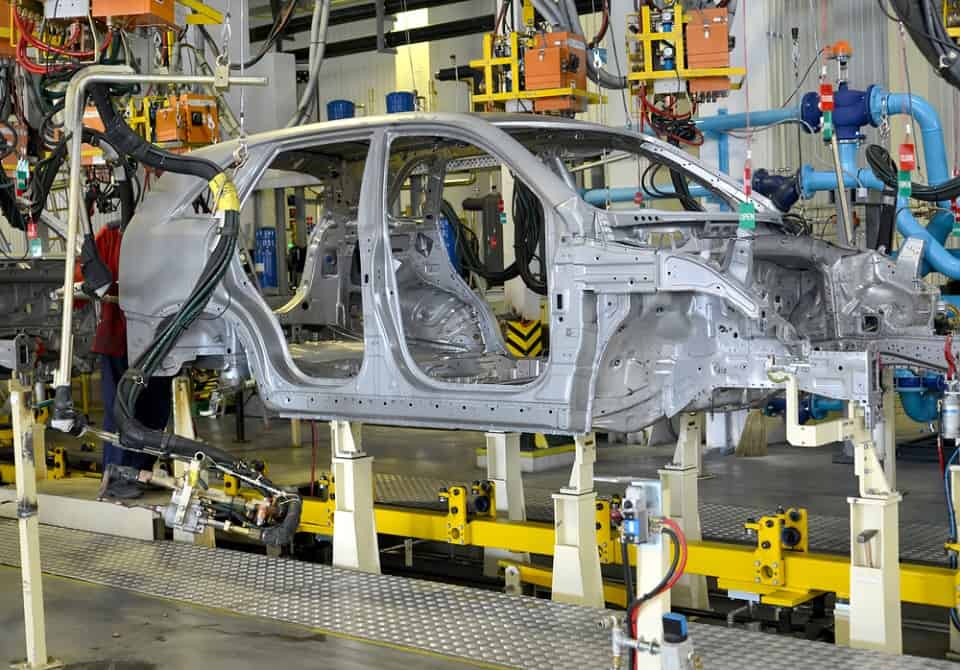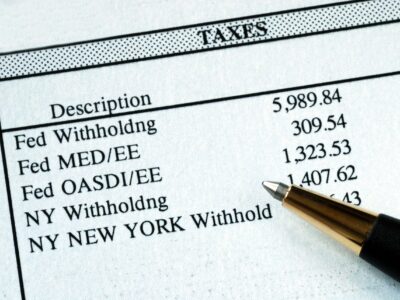Current Assets Know the Financial Ratios That Use Current Assets
Content
- Financial Ratios Using Current Assets or Their Components
- International
- IFRS Foundation publishes proposed IFRS Taxonomy for issues identified in the context of annual improvements
- Current Assets vs. Noncurrent Assets Example
- Examples of Current Assets
- Fast Conversion Cycle of Current Asset
- Example of Current Assets

These are located at the top of the sheet under the section titled “assets.” At the top of the assets section are current assets, followed by long-term assets. These must be assets or cash that expect to be sold or consumed within one year. If there are not enough liquid assets available, the company might run into trouble if it can’t pay its bills. If a company can’t pay its bills, creditors can come after it, causing financial and reputational damage, and potentially resulting in a liquidation or other bankruptcy status. Next, we’ll take a deeper look into different types of assets and learn why they’re considered current assets.

Capital and plant is the book value of all capital equipment and property , less depreciation. So we sold off a bunch of our dark fiber to smaller telecommunications companies and other utilities that could use it, a move which enabled us to stay afloat a little while longer. Get up and running with free payroll setup, and enjoy free expert support.
Financial Ratios Using Current Assets or Their Components
For these inventories, the balance sheet value should be the amount that can be recovered if the stocks can finally be sold. Current assets are the assets a business owns which are either cash, cash equivalents, or are expected to be turned into cash during the next twelve months. Sometimes, whether an asset gets classified as current or fixed can depend on the business. Get instant access to video lessons taught by experienced investment bankers. Learn financial statement modeling, DCF, M&A, LBO, Comps and Excel shortcuts. Assets are listed on a company’s balance sheet along with liabilities and equity. Any inventory that is expected to sell within a year of its production is a current asset.
Is depreciation an expense?
Key Differences. Depreciation is used on an income statement for almost every business. It is listed as an expense, and so should be used whenever an item is calculated for year-end tax purposes or to determine the validity of the item for liquidation purposes.
Inventory is the merchandise that a company purchases or makes to sell to customers for a profit. Thus, their cars are considered inventory, even though they have plenty of pencils in their offices. Accounts receivable is essentially a short-term loan to customers and vendors who purchase goods on account. Typically, customers can purchase goods and pay for them in 30 to 90 days.
International
The company needs a machine to make phones, and so it buys one for £2 million. The machine’s expected useful lifespan is ten years, and the company believes that after this time, it will still be able to sell the current assets machine for £200,000. This depends on many credit terms and the industry standards of such credit terms. Inventories form all kinds of inventories, whether raw material, work-in-progress stock, or finished goods.
However, care should be taken to include only the qualifying assets that are capable of being liquidated at a fair price over the next one-year period. For instance, there is a strong likelihood that many commonly used fast-moving consumer goods goods produced by a company can be easily sold over the next year. Inventory is included in the current assets, but it may be difficult to sell land or heavy machinery, so these are excluded from the current assets. Current assets represent all the assets of a company that are expected to be conveniently sold, consumed, used, or exhausted through standard business operations with one year. Current assets appear on a company’s balance sheet, one of the required financial statements that must be completed each year.
IFRS Foundation publishes proposed IFRS Taxonomy for issues identified in the context of annual improvements
In addition, the resource allocation function is concerned with intangible assets such as goodwill, patents, workers, and brand names. Current assets would include cash, cash equivalents, accounts receivable, stock inventory, marketable securities, pre-paid liabilities, and other liquid assets. Cash and cash equivalents are the most liquid, followed by short-term investments, etc. The total current assets for Walmart for the period ending January 31, 2017, is simply the addition of all the relevant assets ($57,689,000).
Noncurrent assetsare a company’slong-term investments that have a useful life of more than one year. They are required for the long-term needs of a business and include things like land and heavy equipment.
Accounts receivable that have a term of more than a year are not current assets. That’s why you can find the raw materials inventory, WIP inventory, and finished goods inventory on a manufacturer’s balance sheet. To further understand the current assets formula, we must first understand what a current asset is. It’s important for you, as the business owner, to know how many current assets your business has. Having the ability to pay for any types of liabilities that are due is essential for the business’s continued existence and uninterrupted operations.
Current Assets vs. Noncurrent Assets Example
They are normally found as a line item on the top of the balance sheet asset. The main problem with relying upon current assets as a measure of liquidity is that some of the accounts within this classification are not so liquid. In particular, it may be difficult to readily convert inventory into cash. Thus, the contents of current assets should be closely examined to ascertain the true liquidity of a business. These items are typically presented in the balance sheet in their order of liquidity, which means that the most liquid items are shown first. The preceding example shows current assets in their order of liquidity. After current assets, the balance sheet lists long-term assets, which include fixed tangible and intangible assets.
- Investment includes all investments owned by the company that can’t be converted to cash in less than one year.
- “Total current assets” is the sum of cash, accounts receivable, inventory and supplies.
- The quick ratio, sometimes called the acid-test ratio, compares a subset of current assets that can be converted to cash within 90 days to its current liabilities.
- This type of liquidity-related analysis can involve the use of several ratios, include the cash ratio, current ratio, and quick ratio.
- A six-month insurance policy is usually paid for up front even though the insurance isn’t used for another six months.
FREE INVESTMENT BANKING COURSELearn the foundation of Investment banking, financial modeling, valuations and more. Raw material inventory, work in progress inventory, and finished goods inventory. It means that the company has rendered services or delivered the product to the customer. Prepaid expenses for goods or services to be received in the near future.
Examples of Current Assets
All such information is provided solely for convenience purposes only and all users thereof should be guided accordingly. As usual, for these funds to be a current asset, they must be expected to be received within a year. Cash equivalents are any type of liquid securities that are not in the form of cash currently, but that will be in the form of cash within a year. We note above that Google’s Prepaid revenue share, expenses, and other assets have increased from $3,412 million in December 2014 to $37,20 million in March 2015. Paper MoneyPaper money is a country’s currency in banknotes that have a specific value and pay for goods and services.
- It’s the term used to describe advance payments for insurance coverage.
- Notes receivable are also considered current assets if their lifespan is less than one year.
- They are normally found as a line item on the top of the balance sheet asset.
- So to ensure that the business can collect on most if not all of its accounts receivables, it needs to have proper credit and collection policies in place.
- Typically, you sell goods or services on credit to attract customers and augment your sales.
Learn more about the meaning of current assets and examples of what they are with this guide by QuickBooks. Inventories (often also called “stocks”) are the least liquid kind of current asset. Inventories include holdings of raw materials, components, finished products ready to sell and also the cost of “work-in-progress” as it passes through the production process. Current assets are combined with noncurrent assets to make up the company’s total assets on its balance sheet.
Fixed assets include property, plant, and equipment because theyare tangible, meaning that they are physical in nature; we may touch them. For example, an auto manufacturer’s production facility would be labeled a noncurrent asset. Current assets contrast with long-term assets, which represent the assets that cannot be feasibly turned into cash in the space of a year. They generally include land, facilities, equipment, copyrights, and other illiquid investments.

Cash and cash equivalents are the most liquid of assets, meaning that they can be converted into hard currency most easily. Noncurrent assets may be subdivided into tangible and intangible assets—such as fixed and intangible assets. Working capital, or net working capital , is a measure of a company’s liquidity, operational efficiency, and short-term financial health. Sometimes, they may have non-current components such as the accounts receivable and notes receivable we have in this example. For marketable security to be considered a current asset, the holder must be able to cash it in a stock or bond exchange and get its face value within a year of purchase. So to ensure that the business can collect on most if not all of its accounts receivables, it needs to have proper credit and collection policies in place.
This cash is used for small payments like donuts and coffee for a morning meeting, reimbursing an employee for a minor business-related expense, or purchasing a low-cost supply, like paperclips or stamps. A deferred tax is reversed when the expense is deducted for tax purposes or when revenue or gain is recognised in the income statement. A business with positive cash balances can either hold them in the bank or invest them for short periods – perhaps by placing them on short-term deposit. Expected or average financial ratios may vary depending on the business, and depending on where it is in the business life cycle. Non-current assets are assets that have a useful life of longer than one year. If a business sells something to another business, the transaction also usually takes the form of a line of credit, adding to accounts receivable. In the case of bonds, for them to be a current asset they must have a maturity of less than a year; in the case of marketable equity, it is a current asset if it will be sold or traded within a year.
Is loan an asset?
Is a Loan an Asset? A loan is an asset but consider that for reporting purposes, that loan is also going to be listed separately as a liability. Take that bank loan for the bicycle business. The company borrowed $15,000 and now owes $15,000 (plus a possible bank fee, and interest).
Economist Benjamin Graham developed a trading strategy tied to purchasing stocks that were trading below the net current asset value. This is based on comparing a stock price to the amount of net current assets. Stocks that are trading significantly below this value could have the potential to be bargain investments. In your case, having more current assets than current liabilities shows that you have a healthy amount of current assets. Notes that mature within a year or the current period are often grouped in the current assets section of the balance sheet.
Short-Term Investments and Marketable Securities
But if we think from a different angle, we may find the statement correct. It would not be too wrong to assume working capital management is as good as current asset management due to two reasons. One is that the investment in current assets is a substantial part of the company’s total assets. Secondly, the current liabilities are created only because the firm wants to create current assets.

Such a strongly capitalized business can take advantage of a tough financial climate to buy up competitors for a fraction of their true value. Short-term https://www.bookstime.com/ investments aren’t as readily available as money in a checking account, but they provide added cushion if some immediate need were to arise.
Long-term investments, such as bonds and notes, are also considered noncurrent assets because a company usually holds these assets on its balance sheet for more than a year. The current ratio measures a company’s ability to pay short-term and long-term obligations and takes into account the total current assets of a company relative to the current liabilities.